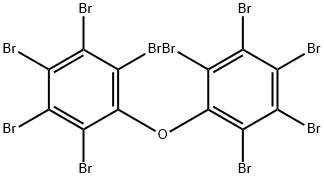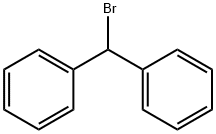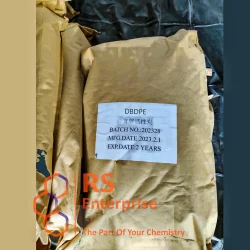Decabromodiphenyl Ethane
- CAS NO.:84852-53-9
- Empirical Formula: C14H4Br10
- Molecular Weight: 971.22
- MDL number: MFCD06407713
- EINECS: 284-366-9
- SAFETY DATA SHEET (SDS)
- Update Date: 2025-07-04 15:09:29

What is Decabromodiphenyl Ethane?
Chemical properties
Decabromodiphenyl ethane is a powder with a high molecular weight, very low water solubility, and low lipophilicity (as indicated by log Kow). The particles are <15 μm in diameter, and thus, this substance is expected to be respirable after inhalation exposure.
Physical properties
White or pale yellow powder. Slightly soluble in alcohol, ether, almost insoluble in water.
The Uses of Decabromodiphenyl Ethane
Decabromodiphenyl ethane (DBDPE) is a brominated flame retardant used as an additive in a variety of polymer and textile applications. In polymeric applications, such as high impact polystyrene,DBDPE is compounded or blended into the resin. The resulting DBDPE containing plastics are then converted to finished products by, for example, injection molding. For textile applications, DBDPE is blended with various latices and applied as a back coating to the textile.
What are the applications of Application
Decabromodiphenylethane is a brominated flame retardant
What are the applications of Application
Decabromodiphenyl ethane, a widely used new brominated flame retardant, is added into flammable materials to achieve fire retardation. It used in thermoplastics, thermosets, textiles and coatings that inhibit or resist the spread of fire.
Preparation
Diphenyl ethane (DPE) was synthesized by using benzene and dichloroethane as raw materials and AlC3 as catalyst, and then DPE was brominated and aged to obtain decabromodiphenyl ethane.
Environmental Fate
Decabromodiphenyl ethane’s physicochemical properties suggest that it will partition predominantly in sediment and soil through binding to the organic fraction of particulate matter. In the EA environmental risk assessment, it concluded that DBDPEthane is unlikely to rapidly undergo photodegradation in the presence of hydroxyl radicals, it is not readily biodegradable in the aquatic environment under aerobic conditions, and it is not hydrolysable (no hydrolysable groups) (Dungey and Akintoye, 2007). No data were available to assess the biodegradation under anaerobic conditions [e.g., wastewater treatment plants (WWTPs) or in sediments]; the EA noted the possibility of reductive debromination under these conditions.
The potential for DBDPEthane to bioconcentrate was evaluated in an 8-week fish bioconcentration study (Dungey and Akintoye, 2007). When fish were exposed to DBDPEthane at concentrations of 0.5 and 0.05mg/l, the respective fish bioconcentration factors (BCFs) were <2.5 and <25 l/kg wet weight (ww), respectively. Since the water concentrations used exceeded DBDPEthane’s water solubility, the dissolved concentration was unknown. The EA appropriately considered this study invalid. No additional BCF studies are available; however, based on the physicochemical properties, lowtoxicity in acute and repeated dose mammalian, aquatic, and terrestrial studies, it is unlikely that DBDPEthane will bioaccumulate.
Properties of Decabromodiphenyl Ethane
| Melting point: | 345°C |
| Boiling point: | 676.2±50.0 °C(Predicted) |
| Density | 2.816±0.06 g/cm3(Predicted) |
| storage temp. | Sealed in dry,Room Temperature |
| solubility | Dioxane (Very Slightly, Heated) |
| form | Solid |
| color | Off-White to Pale Beige |
| CAS DataBase Reference | 84852-53-9(CAS DataBase Reference) |
| EPA Substance Registry System | Benzene, 1,1'-(1,2-ethanediyl)bis[2,3,4,5,6-pentabromo- (84852-53-9) |
Safety information for Decabromodiphenyl Ethane
| Signal word | Warning |
| Pictogram(s) |
 Exclamation Mark Irritant GHS07 |
| GHS Hazard Statements |
H302:Acute toxicity,oral H315:Skin corrosion/irritation H319:Serious eye damage/eye irritation H335:Specific target organ toxicity, single exposure;Respiratory tract irritation |
| Precautionary Statement Codes |
P261:Avoid breathing dust/fume/gas/mist/vapours/spray. P305+P351+P338:IF IN EYES: Rinse cautiously with water for several minutes. Remove contact lenses, if present and easy to do. Continuerinsing. |
Computed Descriptors for Decabromodiphenyl Ethane
| InChIKey | BZQKBFHEWDPQHD-UHFFFAOYSA-N |
Decabromodiphenyl Ethane manufacturer
New Products
Indole Methyl Resin tert-butyl 9-methoxy-3-azaspiro[5.5]undecane-3-carboxylate Boc-His(Boc)-OH 2-CTC Resin 4-Chloro-7-tosy1-7Hpyrrolo[2,3-d]pyrimidine 5,7-Dibromo-1H-indole 2,5-dichloro-N-hydroxy-4,6-dimethylpyridine-3-carboximidamide 2,2-Dimethoxy-7-azaspiro[3.5]nonane hydrochloride 4-chloromethyl-5-methyl-1,3-dioxol-2-one (DMDO-Cl) R-2-BENZYLOXY PROPIONIC ACID 1,1’-CARBONYLDIIMIDAZOLE 1,1’-CARBONYLDI (1,2-4 TRIAZOLE) N-METHYL INDAZOLE-3-CARBOXYLIC ACID 4-((2-hydroxyethyl)thio)benzoic acid 1-(TERT-BUTOXYCARBONYL)-2-PYRROLIDINONE Methyl 6-methylnicotinate 3-Pyridineacrylic acid tert-Butyl carbazate TETRAHYDRO-2H-PYRAN-3-OL 2-((4-morpholinophenylamino) (methylthio) methylene) malononitrile 3-(4-morpholinophenylamino)-5-amino-1H-pyrazole-4-carbonitrile 2,4-dihydroxybenzaldehyde 1,3-Diethyl-1,3-Diphenylurea Methyl 2-methylquinoline-6-carboxylateRelated products of tetrahydrofuran








You may like
-
 Decabromodiphenyl ethane, 96% CAS 84852-53-9View Details
Decabromodiphenyl ethane, 96% CAS 84852-53-9View Details
84852-53-9 -
 1,2-Bis(2,3,4,5,6-pentabromophenyl)ethane CAS 84852-53-9View Details
1,2-Bis(2,3,4,5,6-pentabromophenyl)ethane CAS 84852-53-9View Details
84852-53-9 -
 Flame Retardants for ABS FR-1410 DecabromodiphenylethaneView Details
Flame Retardants for ABS FR-1410 DecabromodiphenylethaneView Details
84852-53-9 -
 Deca Bromo Diphenyl Ethane DbdpeView Details
Deca Bromo Diphenyl Ethane DbdpeView Details
84852-53-9 -
 Pyridine 99.5% HPLC /UV SpectroscopyView Details
Pyridine 99.5% HPLC /UV SpectroscopyView Details
110-86-1 -
 Dibutyl PhthalateView Details
Dibutyl PhthalateView Details
84-74-2 -
 Imidazole Spot supply, competitive priceView Details
Imidazole Spot supply, competitive priceView Details
288-32-4 -
 Thiourea 99% ARView Details
Thiourea 99% ARView Details
62-56-6
